The automotive landscape is undergoing a significant shift, with electric vehicles (EVs) at the forefront of this change. Not so long ago, the idea of an electric car outperforming its internal combustion engine counterpart was unimaginable.
However, the performance of EVs has evolved dramatically, with some models now capable of accelerating from 0-60 mph in under 2 seconds.
We are witnessing a revolution where electric performance is becoming the new benchmark. Manufacturers are competing to produce the most powerful EVs, redefining what we consider ‘performance’ in the modern era.
Table of Contents
The Electric Revolution in High-Performance Vehicles
The automotive world is experiencing a revolution with electric vehicles, pushing the boundaries of speed and performance. Over time, the electric car landscape has changed significantly, with car makers developing powerful and outlandish performance models.
As electric vehicles continue to evolve, they are redefining our understanding of high-performance driving. Manufacturers have successfully transformed electric cars from eco-conscious alternatives to performance powerhouses, challenging traditional petrol sports cars.
From Eco-Friendly to Speed Demons
The transformation of electric vehicles represents one of the most significant shifts in automotive history. What began as a focus on sustainability has evolved into a technological race, producing vehicles capable of acceleration figures that surpass exotic supercars.
Electric vehicles now boast instant torque delivery, lower centers of gravity, and simplified power distribution, making them superior to their petrol counterparts in many aspects.
Breaking Performance Records
The world’s automotive landscape is witnessing a paradigm shift as electric vehicles set new benchmarks for speed and acceleration. Quarter-mile times and top speeds that were once considered fantasy are now being achieved.
| Model | 0-60 mph | Top Speed |
|---|---|---|
| Rimac Nevera | 1.7 seconds | 258 mph |
| Pininfarina Battista | 1.8 seconds | 221 mph |
| Tesla Model S Plaid | 2.0 seconds | 163 mph |
How Electric Motors Deliver Unprecedented Acceleration
With their ability to deliver instant torque, electric motors are setting new standards for vehicle acceleration. This is a significant departure from traditional internal combustion engines, which require time to build up RPM and reach peak torque.
Instant Torque: The EV Advantage
Electric motors deliver 100% of available torque instantly, eliminating the need for complex transmissions and providing immediate power response. Unlike gasoline engines, electric motors achieve maximum torque from a standstill, creating instant acceleration that makes EVs feel significantly faster than their horsepower ratings might suggest.
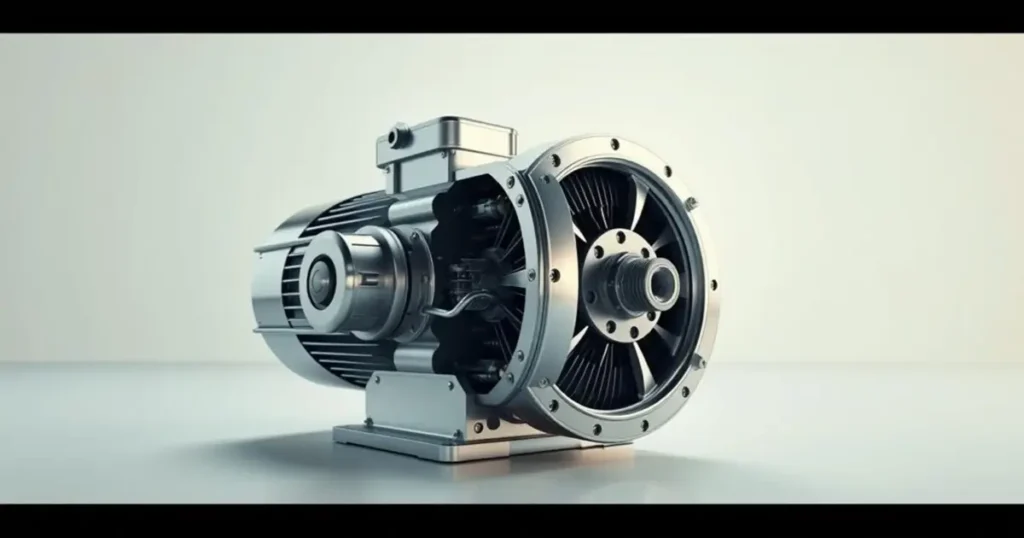
Multi-Motor Configurations
Advanced electric vehicles utilize multi-motor configurations, typically with separate motors for front and rear axles or even individual wheel motors. This allows for precise torque vectoring and optimized power delivery in all driving conditions, as seen in the Rimac Nevera, which houses four independent electric motors, delivering 1,914 horsepower and 1,741 lb-ft of torque.
The World’s Fastest Electric Car: Rimac Nevera
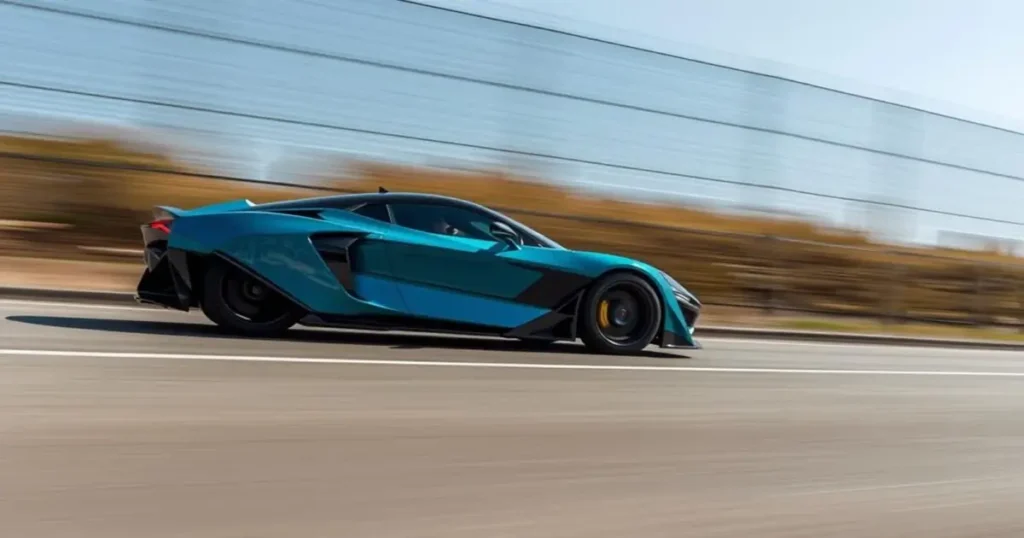
As the world’s fastest electric car, the Rimac Nevera sets a new benchmark for acceleration and top speed. This all-electric hypercar has shattered numerous performance records, redefining what’s possible in the world of electric vehicles.
Engineering Marvel: 1,914 HP Quad-Motor Setup
The Rimac Nevera boasts a unique configuration with four independent electric motors, one for each wheel. This setup delivers an astonishing 1,914 horsepower and 1,741 lb-ft of torque, making it a true marvel of engineering.
Record-Breaking Performance: 0-60 mph in 1.7 Seconds
The Nevera’s quad-motor setup enables it to sprint from 0-60 mph in just 1.7 seconds, making it the fastest accelerating production car in the world. It recently set 23 performance records in a single day, including the 0-400-0 km/h challenge, completed in 29.93 seconds.
Pininfarina Battista: Italian Design Meets Electric Power
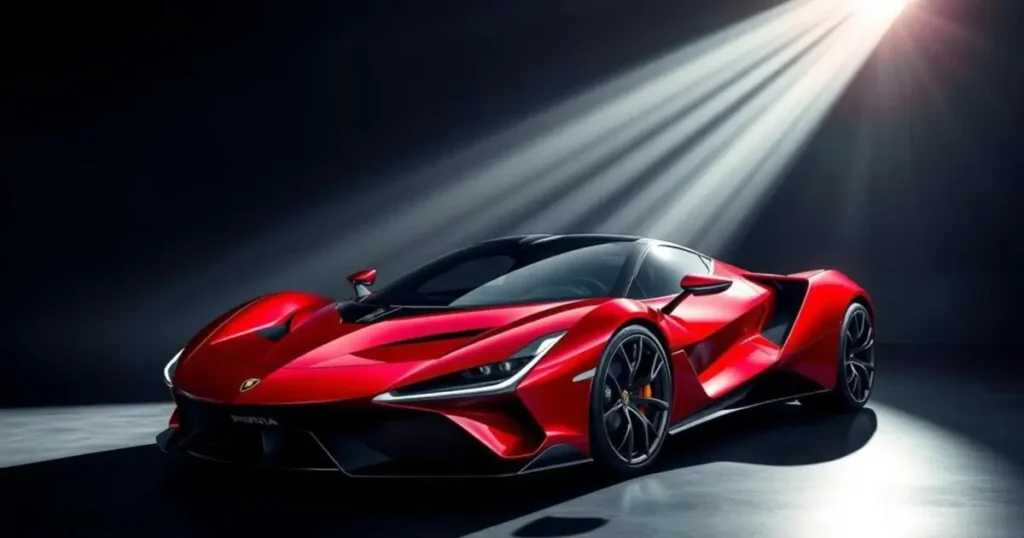
The world of hypercars has just gotten more exciting with the introduction of the Pininfarina Battista. This all-electric hypercar is a masterpiece that combines Italian design heritage with cutting-edge electric performance. Developed by Automobili Pininfarina, the Battista pays homage to the company’s founder while pushing the boundaries of electric power.
1,900 HP Hypercar Excellence
The Battista boasts an incredible powertrain, with four electric motors delivering a combined output of 1,900 horsepower and 1,725 pound-feet of torque. This exceptional power enables the Battista to achieve remarkable performance figures, making it one of the fastest-accelerating road-legal production cars ever created.
Luxury Performance: 0-60 mph in 1.8 Seconds
With its astonishing acceleration, the Battista can sprint from 0 to 60 mph in just 1.8 seconds. It also reaches a top speed of 217 mph, placing it among the fastest electric vehicles ever built. The Battista’s performance is complemented by its luxurious and refined interior, featuring sustainable materials and state-of-the-art technology.
Lucid Air Sapphire: American Electric Luxury
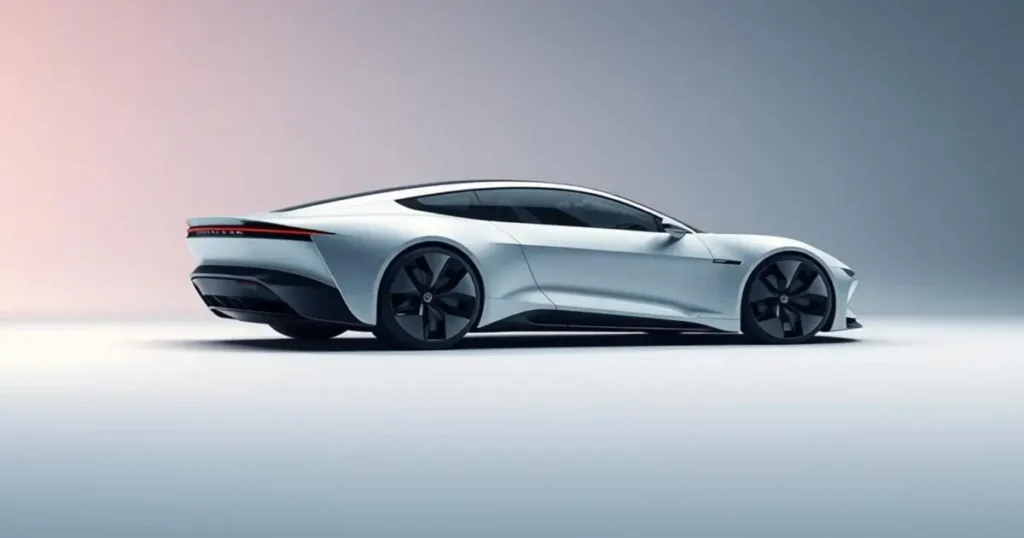
The Lucid Air Sapphire represents a significant leap forward in electric vehicle technology and luxury. As a high-performance variant of the Lucid Air lineup, it combines stunning design with exceptional capabilities.
Tri-Motor Technology: 1,234 HP
The Lucid Air Sapphire is powered by a tri-motor all-wheel-drive system, producing 1,234 horsepower and 1,430 lb-ft of torque. This tri-motor setup enables the vehicle to deliver exceptional performance and acceleration. Lucid’s proprietary electric motor technology ensures that the Air Sapphire achieves remarkable efficiency alongside its impressive power output, offering over 400 miles of range.
Combining Comfort and Speed: 0-60 mph in 1.89 Seconds
The Lucid Air Sapphire can accelerate from 0 to 60 mph in just 1.89 seconds, making it one of the quickest production cars in the world. It can also complete the quarter mile in a mere 8.9 seconds. The vehicle’s sophisticated suspension system and torque-vectoring capabilities ensure that its straight-line performance is complemented by impressive handling characteristics, maintaining the comfort expected of a luxury sedan.
Tesla Model S Plaid: Mainstream Performance Leader
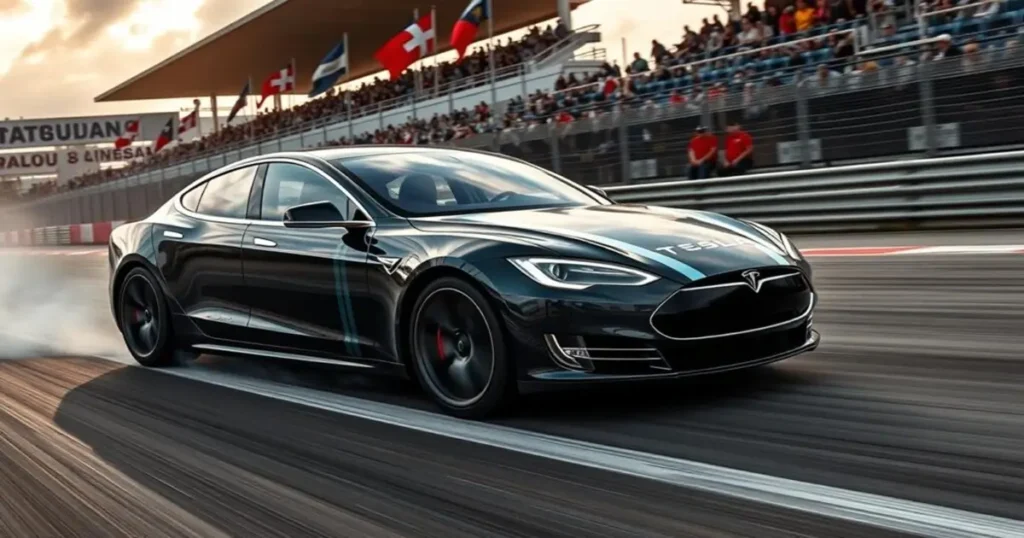
Tesla’s relentless pursuit of innovation has led to the creation of the Model S Plaid, a high-performance electric sedan that is redefining the automotive landscape.
Accessible Speed: 1,020 HP
The Tesla Model S Plaid boasts a tri-motor all-wheel-drive system, producing a staggering 1,020 horsepower and 1,050 lb-ft of torque. This immense power makes it one of the quickest production cars available, rivaling exotic hypercars.
Track-Ready Sedan: 0-60 mph in 2.0 Seconds
With its incredible acceleration, the Model S Plaid can go from 0 to 60 mph in just 1.99 seconds using Tesla’s specialized launch control. It’s optimized for track use with improved cooling systems and a dedicated “Track Mode.”
The Model S Plaid is not only about performance; it also offers an EPA-estimated range of 348 miles and access to Tesla’s extensive Supercharger network, making it a practical choice for both daily driving and long-distance travel.
Porsche Taycan Turbo GT: German Engineering Excellence
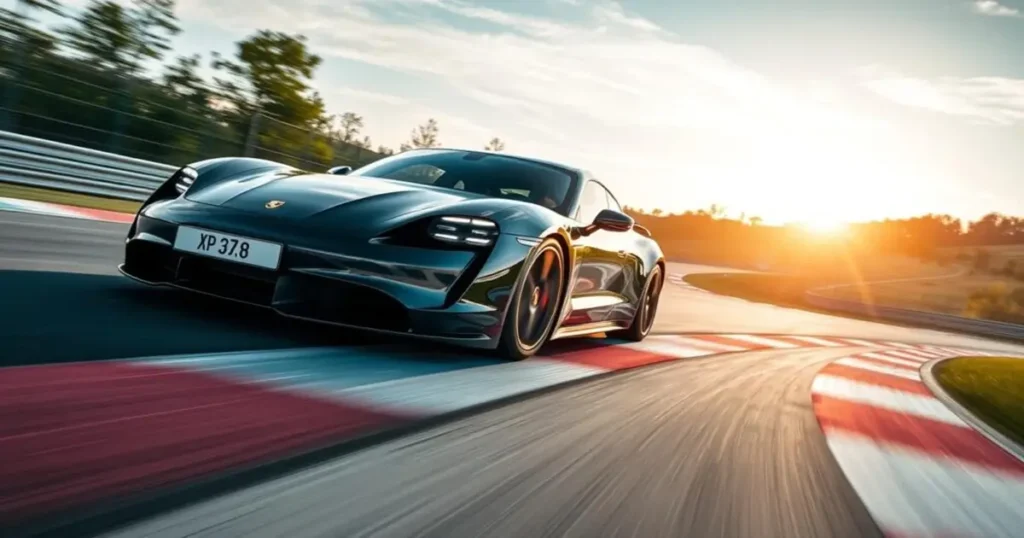
The Porsche Taycan Turbo GT embodies the pinnacle of German electric performance engineering. With its dual-motor powertrain, it delivers 1,009 horsepower, and in overboost mode, it can reach an impressive 1,093 horsepower.
Precision Performance: 1,009 HP
The Taycan Turbo GT’s powertrain is a marvel of precision engineering, offering exceptional performance and speed. With the optional Weissach package, the vehicle becomes even more track-focused, shedding unnecessary weight to enhance its capabilities.
Nürburgring Record Holder: 0-60 mph in 2.2 Seconds
The Taycan Turbo GT is not just about straight-line speed; it’s also a masterclass in handling and chassis dynamics. It has set a production electric car lap record at the Nürburgring Nordschleife, achieving a 0-60 mph sprint in just 2.2 seconds and reaching a top speed of 190 mph.
Luxury Electric Performance Sedans
The luxury electric vehicle market is witnessing a significant shift towards high-performance sedans. This trend is led by established German manufacturers who are leveraging their performance divisions to create electric vehicles that embody their brand’s driving characteristics.
Audi RS e-tron GT: 0-62 mph in 2.5 Seconds
The Audi RS e-tron GT represents the pinnacle of Audi’s electric performance, with its latest Performance variant producing 912 horsepower. This enables a 0-62 mph time of just 2.5 seconds. The RS e-tron GT shares its platform with the Porsche Taycan, but features unique tuning that reflects Audi’s brand identity.
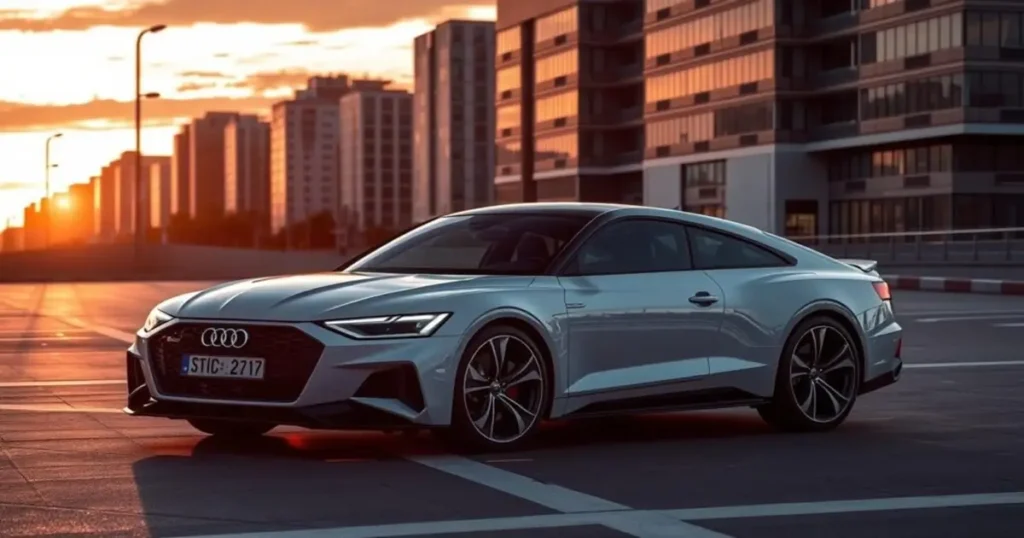
Mercedes-AMG EQS53: 0-62 mph in 3.8 Seconds
The Mercedes-AMG EQS53 takes a different approach, emphasizing luxury alongside performance with its distinctive “one-bow” design and 56-inch Hyperscreen. It delivers impressive acceleration with a 0-62 mph time of 3.8 seconds. As the performance variant of the standard EQS, it showcases Mercedes-AMG’s ability to blend luxury and speed.
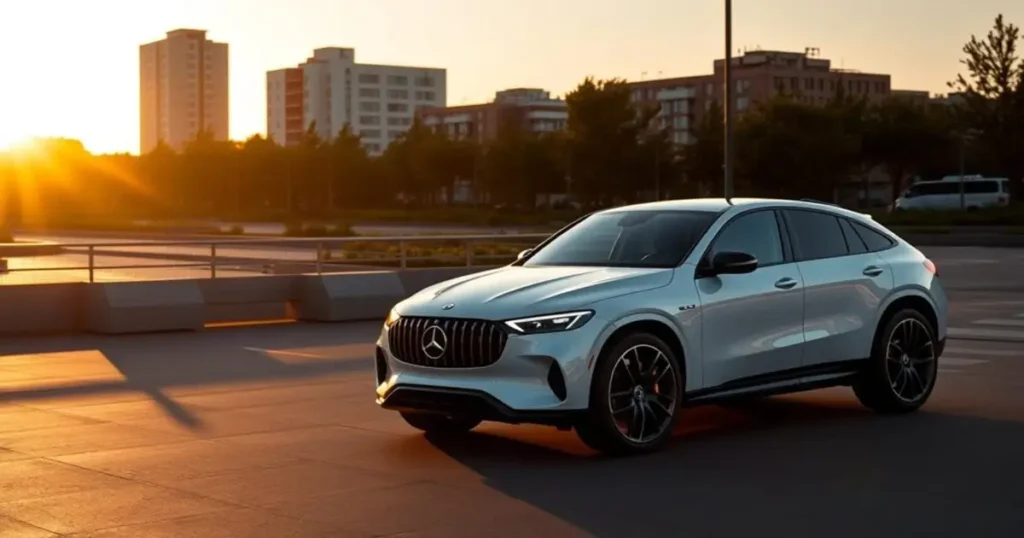
High-Performance Electric SUVs
As we explore the latest advancements in electric vehicles, it’s clear that high-performance electric SUVs are redefining the automotive landscape. These vehicles combine the practicality of an SUV with the acceleration figures of dedicated sports cars, making them a rapidly growing segment in the market.
BMW iX M60: 0-62 mph in 3.8 Seconds
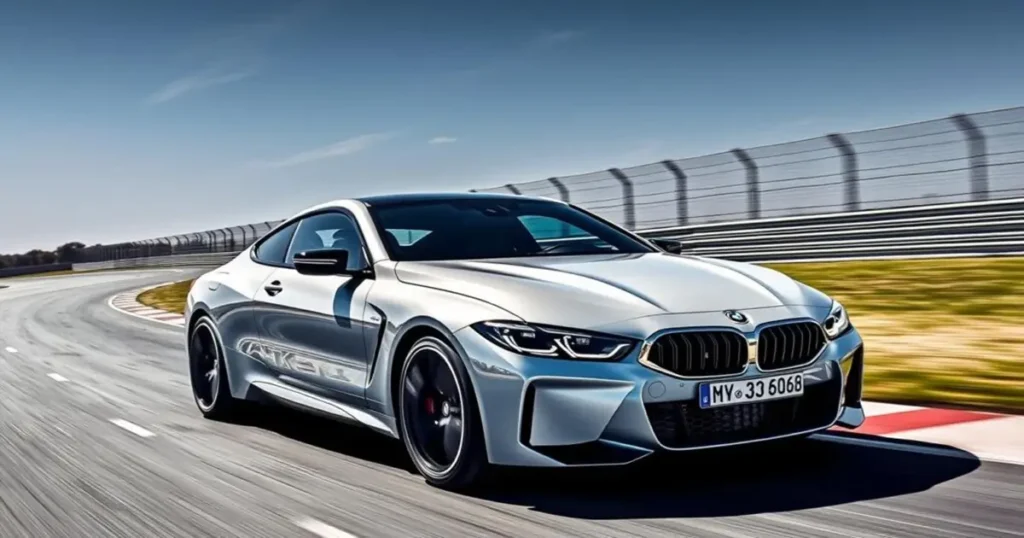
The BMW iX M60 showcases the brand’s approach to electric performance with 619 horsepower from its dual-motor setup. This enables a 0-62 mph time of 3.8 seconds while maintaining BMW’s focus on driving dynamics and luxury.
Tesla Model X Plaid: 0-60 mph in 2.6 Seconds
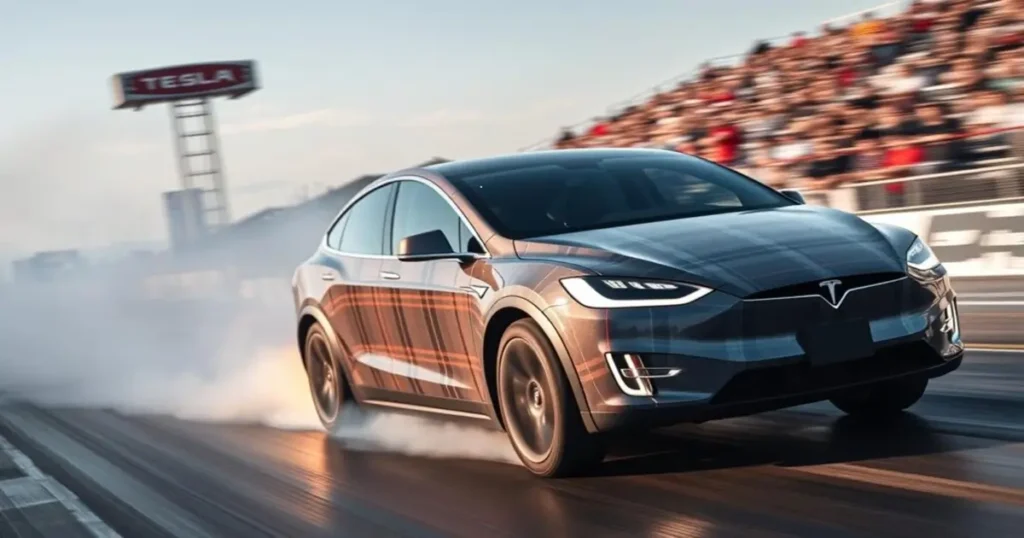
Tesla’s Model X Plaid defies physics with its 1,020 horsepower tri-motor powertrain, accelerating from 0-60 mph in just 2.6 seconds. This makes it faster than many supercars despite weighing over 5,000 pounds.
Affordable Fast Electric Cars
The democratization of electric performance has led to a new era of affordable EVs, making high-speed driving accessible to a wider audience.
Kia EV6 GT
The Kia EV6 GT transforms a standard crossover into a performance machine, boasting 577 horsepower and a 0-62 mph time of just 3.5 seconds, all for under $65,000.
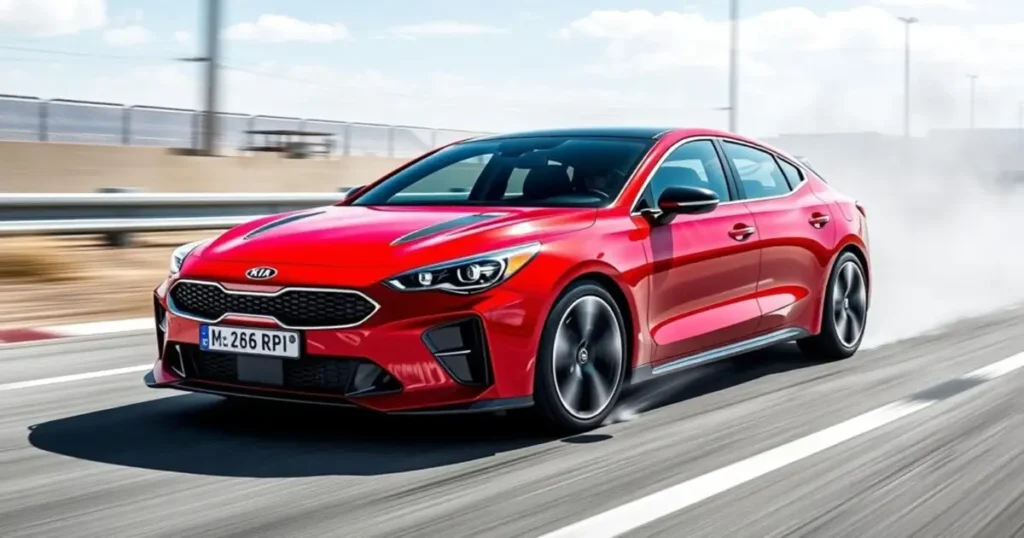
Hyundai Ioniq5 N
Hyundai’s Ioniq5 N is a new benchmark in electric performance, featuring a 641 horsepower dual-motor setup that achieves 0-62 mph in 3.4 seconds, along with innovative features like simulated gear shifts and synthesized exhaust sounds.
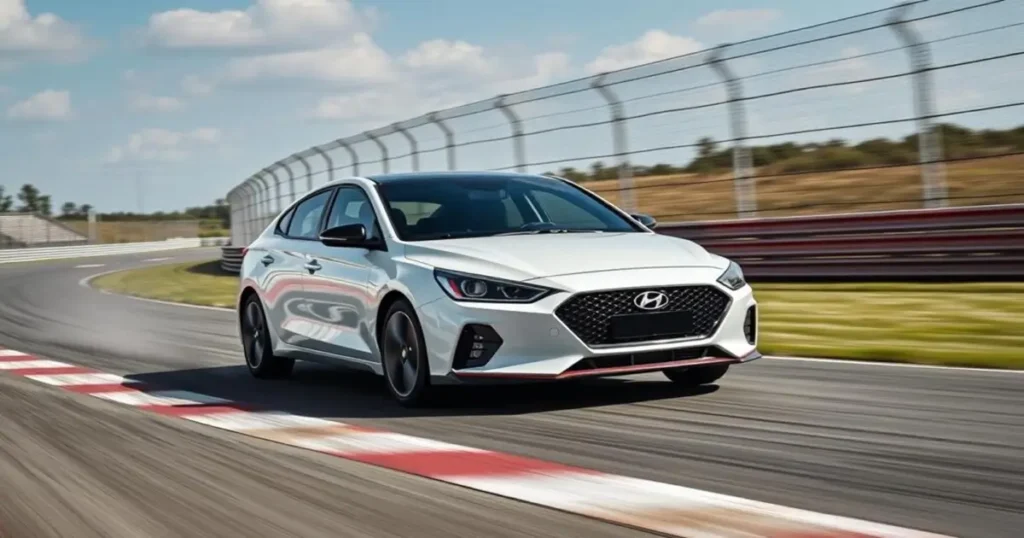
Electric Hypercars on the Horizon
As we look to the future, electric hypercars are set to redefine performance. The next generation of these vehicles promises to push the boundaries of speed and efficiency even further.
Tesla Roadster: Promised 0-60 mph in 1.9 Seconds
The Tesla Roadster, expected to achieve a 0-60 mph time of 1.9 seconds, is one of the most anticipated electric hypercars. With a claimed top speed of over 250 mph and a range of 620 miles, it represents a significant leap in electric vehicle performance.
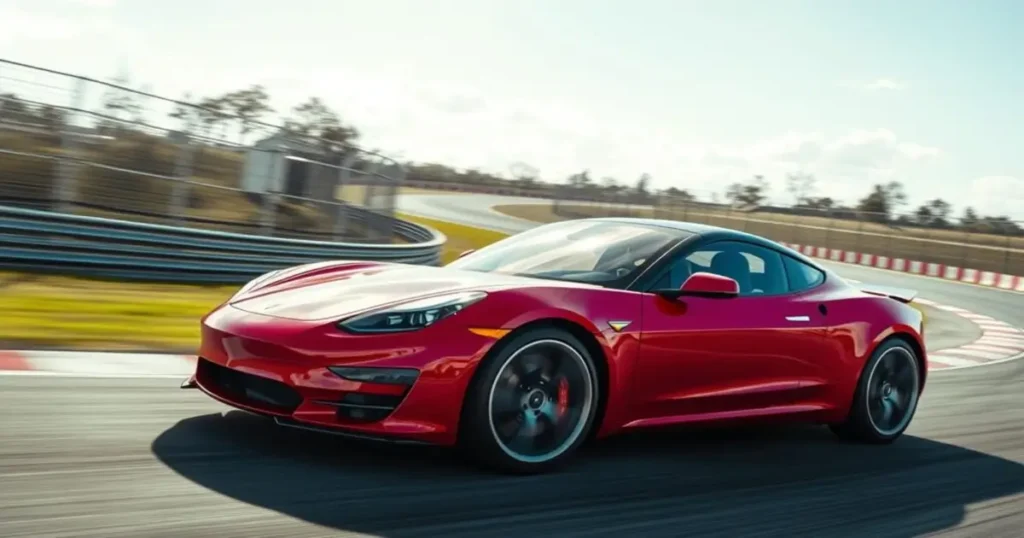
Lotus Evija: 2,000 HP Electric Hypercar
The Lotus Evija is another highly anticipated electric hypercar, boasting a 2,000 horsepower quad-motor powertrain. It can accelerate from 0-60 mph in under 3 seconds and reach a top speed of 218 mph.
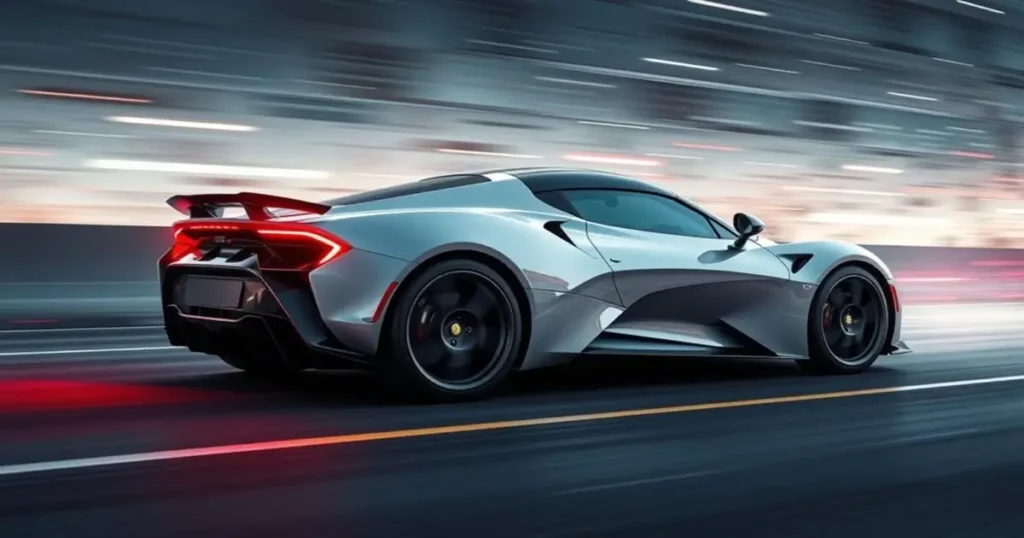
These electric hypercars are not just about raw power; they incorporate advanced technologies such as aerodynamics, lightweight materials, and innovative battery solutions to overcome traditional performance compromises.
Electric Pickup Trucks with Surprising Speed
Electric pickup trucks are shattering the old paradigm that utility vehicles can’t be fast. With their instant torque and advanced electric powertrains, these trucks are delivering performance that rivals traditional sports cars.
Rivian R1T: 0-60 mph in 2.9 Seconds
The Rivian R1T Quad-Motor configuration produces 1,010 horsepower and 1,198 lb-ft of torque, enabling a 0-60 mph time of just 2.9 seconds. This level of performance is comparable to many high-performance sports cars, including some Porsche 911 variants.
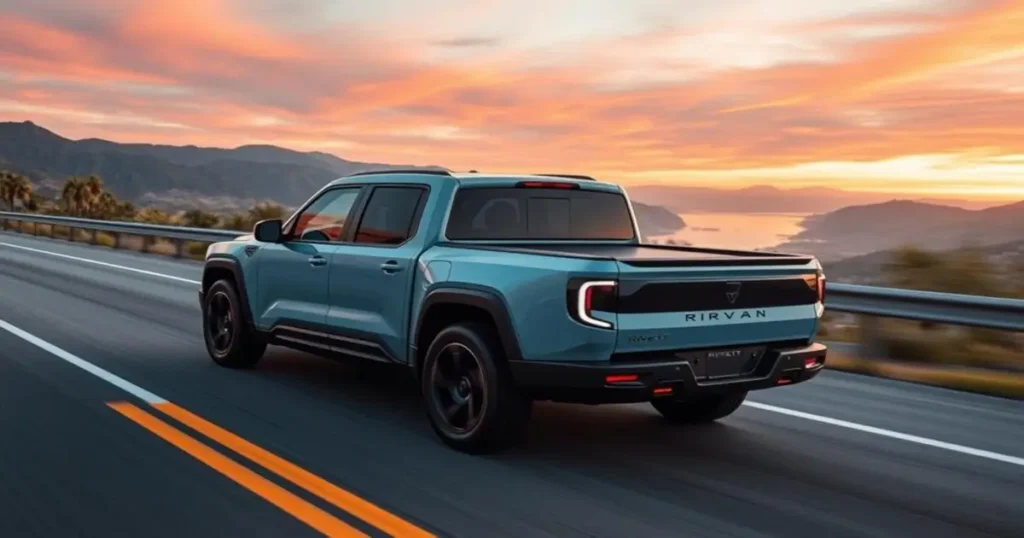
GMC Hummer EV: 0-60 mph in 3.3 Seconds
GMC’s Hummer EV, with its “Watts to Freedom” launch mode, can propel this massive truck from 0-60 mph in approximately 3.3 seconds. Its tri-motor powertrain delivers 1,000 horsepower, making it a formidable performer despite its size.

Both the Rivian R1T and GMC Hummer EV demonstrate that electric pickup trucks can offer not just utility, but also exceptional performance, challenging the traditional notions of what pickup trucks can achieve.
How Fast Electric Cars Are Changing Motorsports
As electric vehicles continue to break records, they’re changing the face of motorsports forever. The unique characteristics of electric powertrains have created new racing strategies and driver skills, with energy management and regenerative braking techniques becoming as crucial as raw speed in determining race outcomes.
Formula E: The Electric Racing Revolution
Formula E has emerged as the flagship all-electric racing series, attracting major manufacturers like Porsche, Jaguar, and Nissan. This series has not only brought electric racing to the forefront but has also showcased the capabilities of electric vehicles in a competitive environment.
Production EVs Breaking Track Records
Production-based electric vehicles are setting impressive lap records at iconic circuits. For instance, the Porsche Taycan and Tesla Model S Plaid have demonstrated the capabilities of electric performance on traditional racing venues. The Volkswagen ID.R, a purpose-built electric racer, has shattered records at prestigious events like the Pikes Peak International Hill Climb and the Nürburgring Nordschleife.
| Electric Vehicle | 0-60 mph | Top Speed |
|---|---|---|
| Volkswagen ID.R | 2.2 seconds | 170 mph |
| Porsche Taycan Turbo | 2.4 seconds | 162 mph |
| Tesla Model S Plaid | 2.0 seconds | 163 mph |
Manufacturers are increasingly using motorsport as a development platform for electric technology that will eventually reach production vehicles, accelerating advancements in battery technology, thermal management, and power delivery systems.
The Technology Behind the Fastest Electric Cars
Advances in battery technology, powertrain design, and cooling systems are enabling electric vehicles to achieve unprecedented speeds. The Rimac Nevera, for instance, boasts a 120 kWh battery pack that is structurally integrated into the carbon fiber monocoque, enhancing the car’s rigidity and maintaining a low center of gravity.
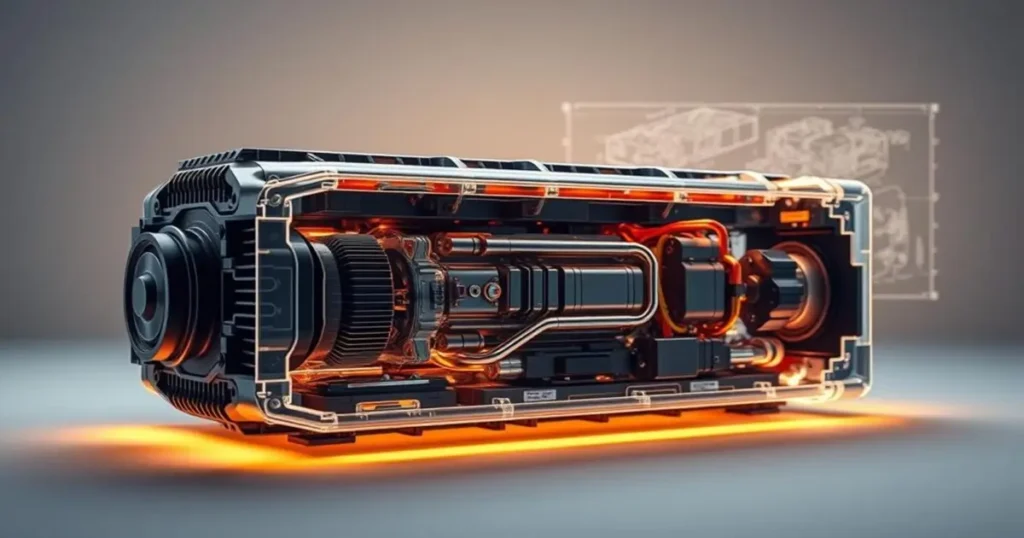
Battery Innovations for Performance
Advanced powertrain configurations and battery chemistry play a crucial role in high-performance EVs. Silicon-rich anodes and solid-state electrolytes allow for increased power density and discharge rates, maintaining a reasonable range. The Rivian R1T and Porsche Taycan Turbo are examples of EVs that have made significant strides in this area.
Advanced Cooling Systems
Thermal management is critical in performance electric vehicles. Sophisticated cooling systems, including liquid-cooled elements and phase-change materials, prevent performance degradation during sustained high-output driving. This ensures that EVs like the Tesla Model S Plaid can maintain their long range and accelerate from 0-mph in under 2 seconds.
Environmental Impact of High-Performance EVs
As we explore the world of high-performance electric vehicles (EVs), it’s crucial to consider their environmental impact. The automotive industry is shifting towards more sustainable options, and EVs are at the forefront of this change.
High-performance EVs offer a significantly reduced environmental impact compared to their internal combustion counterparts. They produce zero tailpipe emissions and have the potential for carbon-neutral operation when charged with renewable energy.
Carbon Footprint Comparison with Supercars
The manufacturing carbon footprint of performance EVs is higher than conventional cars due to battery production. However, this is typically offset within 1-2 years of operation compared to equivalent gasoline supercars that can emit over 500g of CO2 per kilometer.
| Vehicle Type | CO2 Emissions (g/km) | Offset Period (Years) |
|---|---|---|
| Performance EVs | 0 | 1-2 |
| Gasoline Supercars | 500+ | N/A |
Sustainable Materials in Luxury EVs
Luxury electric vehicle manufacturers are incorporating sustainable materials in their interiors, such as recycled plastics, plant-based leathers, and responsibly sourced woods. For instance, the Battista features a hand-crafted interior with sustainable materials and state-of-the-art technology, maintaining the luxury and refinement expected of an ultra-exclusive hypercar.
“The use of sustainable materials in luxury EVs not only reduces environmental impact but also enhances the overall driving experience.”
The longevity of electric powertrains, with fewer moving parts and reduced maintenance requirements, contributes to their overall environmental credentials. This extends the useful vehicle life and reduces resource consumption for replacement parts.
Conclusion: The Future of Electric Performance
As we witness the rapid evolution of electric vehicles, it’s clear that the future of automotive performance is being rewritten. The fastest electric cars are pushing the limits of speed and performance, with manufacturers like Rimac and Pininfarina breaking records.
The electric vehicle revolution is not just about sustainability; it’s also about performance and innovation. With advancements in battery technology, we can expect even more impressive capabilities from future electric performance vehicles, potentially reaching 0-60 mph in under 1.5 seconds.
The democratization of electric performance will continue, with technologies trickling down to more accessible models. The distinctive character of electric performance – instant torque and precise power delivery – is creating a new performance paradigm.